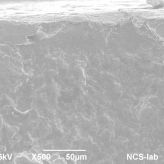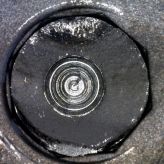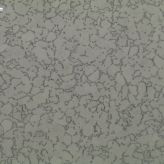FULL EXAMINATION AND ANALYSIS
Comprehensive process for investigating the causes of distal stem breakage
SECTOR
Medical
PROBLEM
Breaking the prosthetic stem
MATERIAL
Grade 5 titanium
APPROACH
Macroscopic visual inspection
Stereomicroscope examination for accurate observation of fracture surfaces
Materialographic examination of fracture surfaces
SEM microscopy for fratographic examination
Material characterization with hardness measurement
RESULTS
The prosthesis stem is made of grade 5 titanium alloy in compliance with ISO 5832-3 and ASTM F136, with a hardness of 318 HV10. The microstructure is homogeneously equassic, typical of the material in the annealed state, and does not present any anomaly.
The collected fracographic evidence, in particular the evidence of stable propagation with transgranular advancement, are in agreement in indicating a fatigue rupture by simple flexion, with trigger at the point of contact of the conical stele-neck coupling.
The extent of stable propagation indicates that the breaking loads are low. The bending stresses are compatible with the presumable system design of the component.
There are slight traces of surface wear in the area of the triggering zone, which typically favors the nucleation of fatigue fractures. This wear is likely to be caused by micro-fractures between the stem and neck and is a typical phenomenon on hip replacements of this type.


